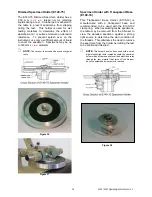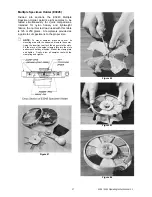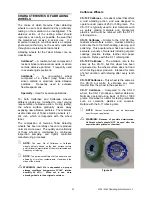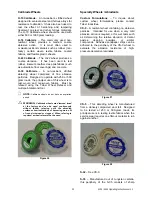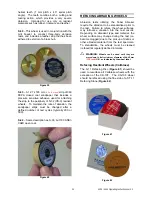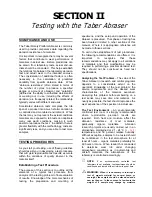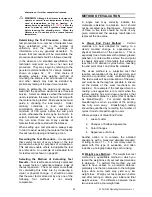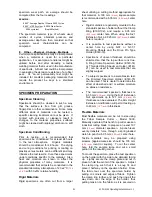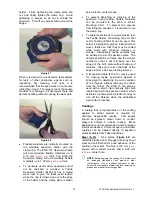
helical teeth (1 mm pitch x 45° spiral pitch
angle). The teeth combine both a cutting and
tearing action, which provides a very severe
abrasion. Intended for use only on resilient
materials such as rubber, linoleum, and leather.
S-39
– This wheel is used in conjunction with the
Grit Feeder to conduct three-body abrasion
tests, and includes a leather strip that has been
adhered to exterior of a brass hub.
Figure 59
S-33
– A 12.7 x 165 mm
(0.5 x 6.5 inch)
strip of 360
FEPA closed coat sandpaper that includes a
pressure sensitive adhesive used for attaching
the strip to the periphery of S-32 (CS-0) resilient
wheels. To maintain the rate of abrasion, the
sandpaper strips must be changed after a
defined number of test cycles (typically 200 or
500).
S-42
– Same description as S-33, but 180 ANSI-
CAMI open coat.
Figure 60
REFACING ABRADING WHEELS
Abrasion tests utilizing the Taber Abraser
require the abradant to be standardized prior to
the test. Failure to reface the wheel surfaces,
may introduce variation into the test results.
Depending on abradant type and material, the
wheel surface may change during the test (i.e.
become clogged) due to the pick up of debris or
other abraded material from the test specimen.
To standardize, the wheels must be cleaned
(refaced) at regularly defined intervals.
U
WARNING:
Wheels can be used until they are
worn down to their minimum diameter of 44.45 mm
(1.75 inch)
O.D. as indicated by the wheel label.
Refacing Resilient Wheels (Calibrase)
The S-11 Refacing Disc (
Figure 61
) should be
used to resurface all Calibrase wheels with the
exception of the CS-10F. The CS-10F wheel
should be refaced using the fine side of a ST-11
Refacing Stone (
Figure 62
).
Figure 61
Figure 62
24
5135 / 5155 Operating Instructions ver 1.1







